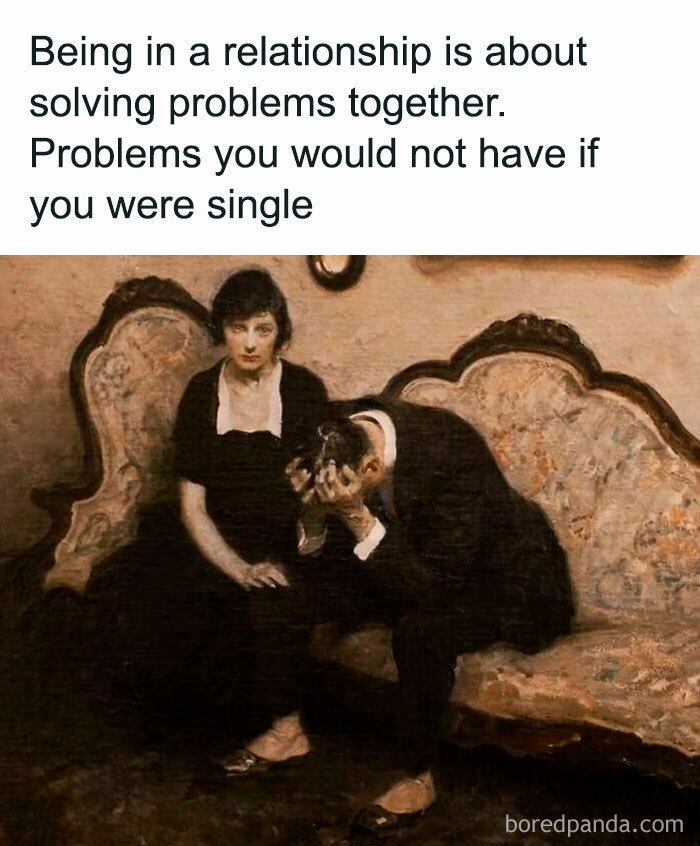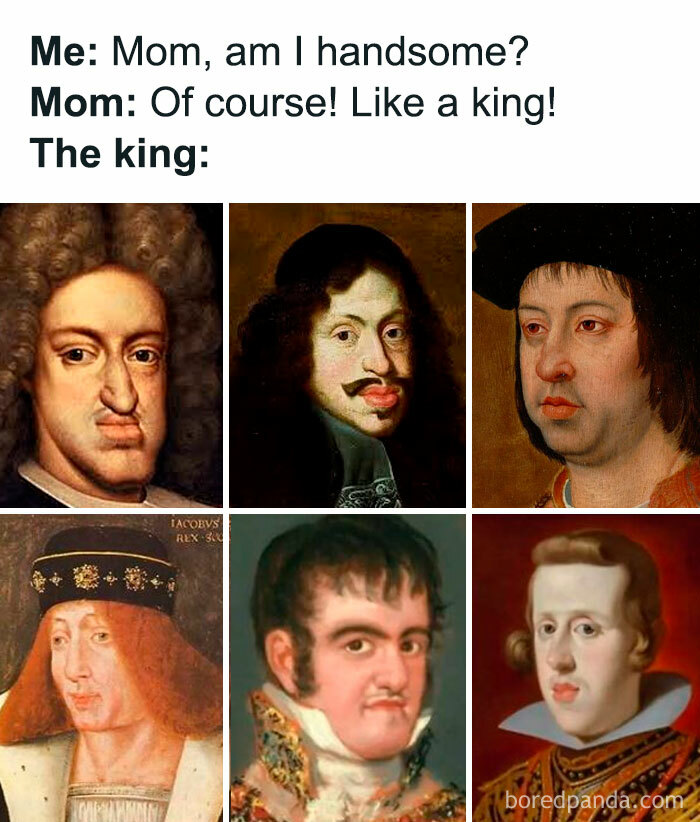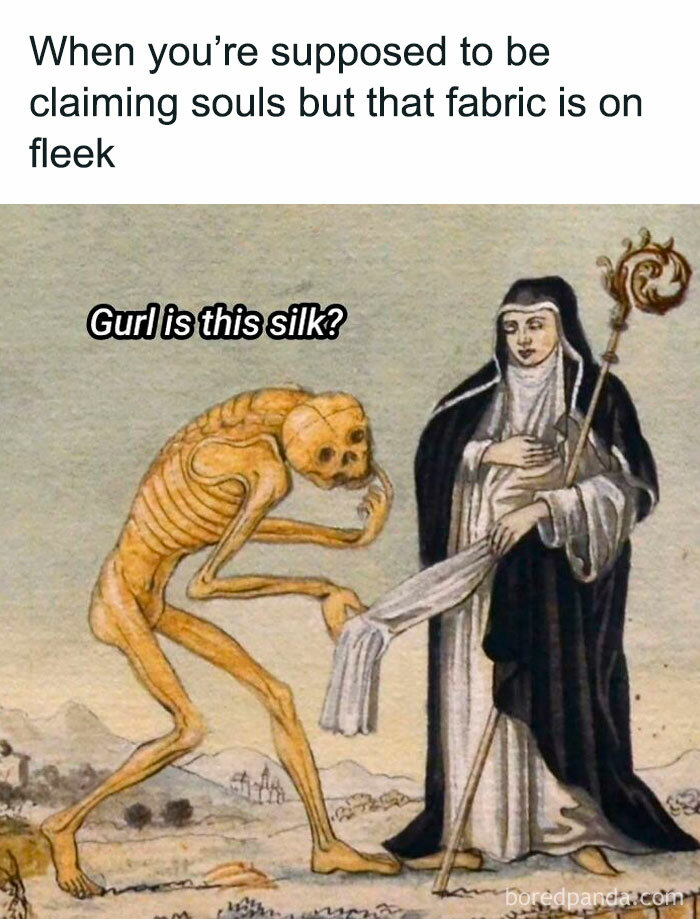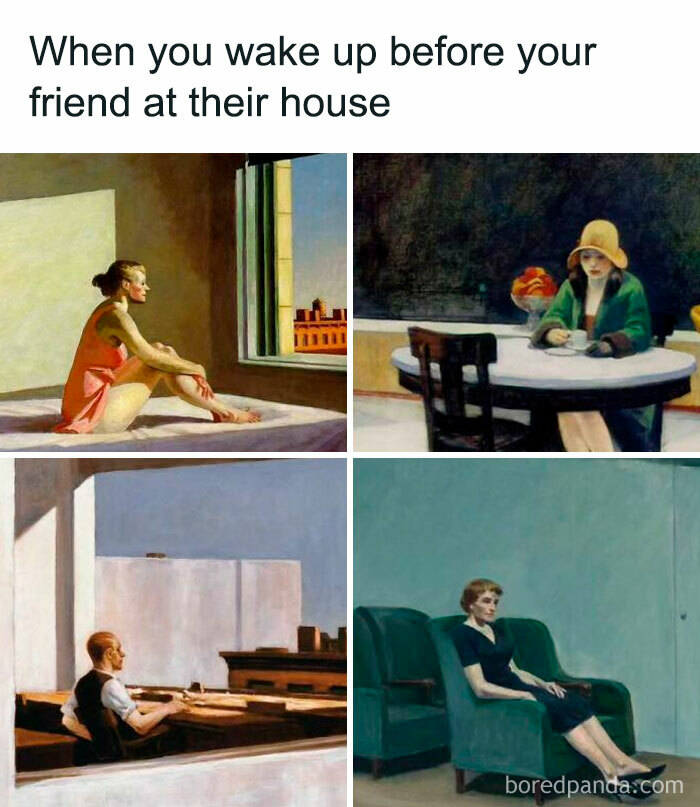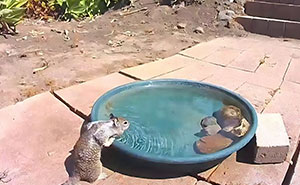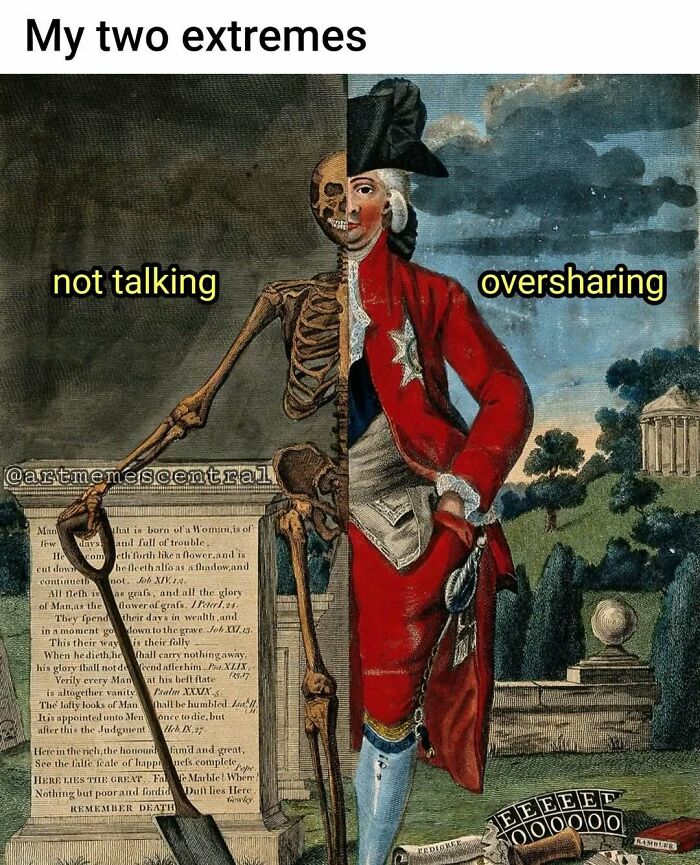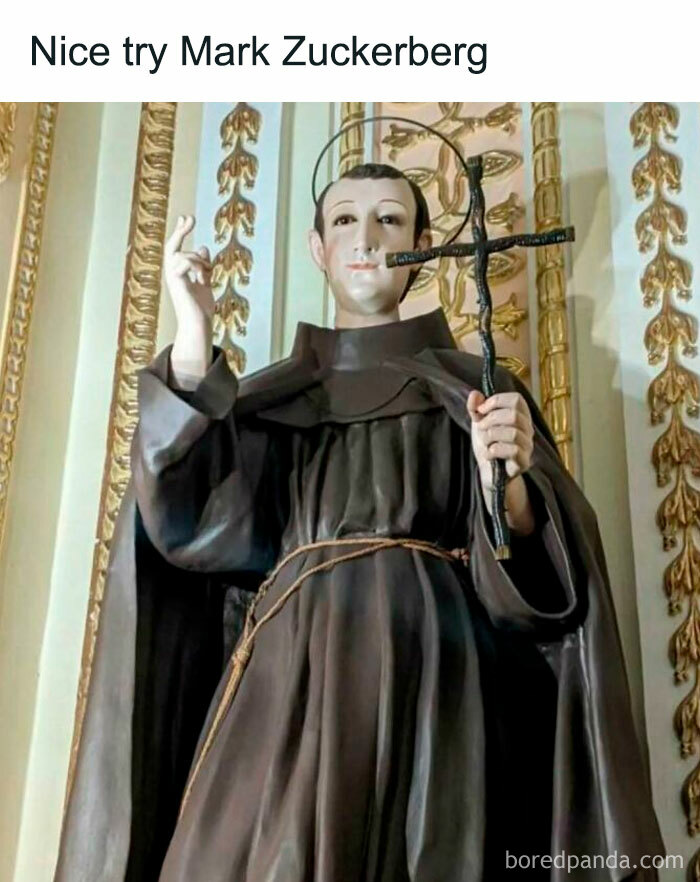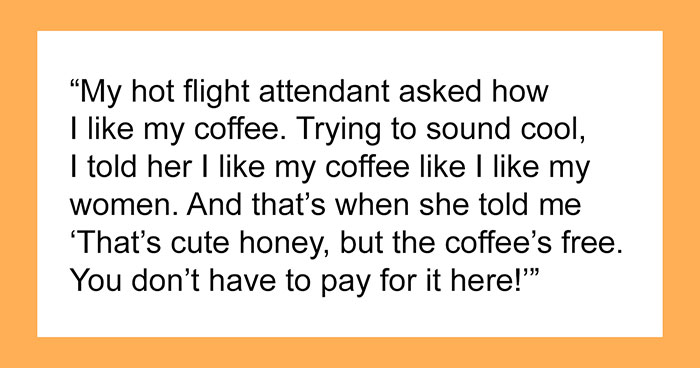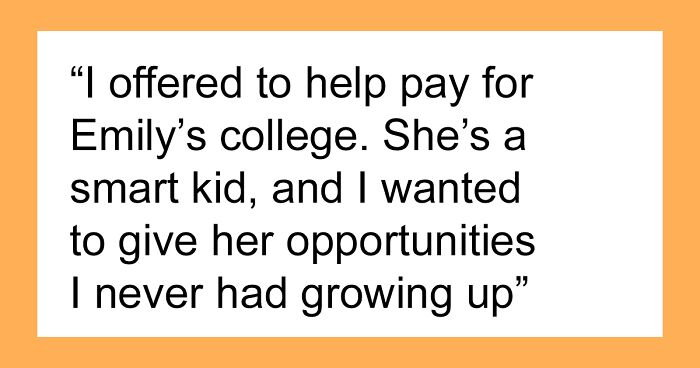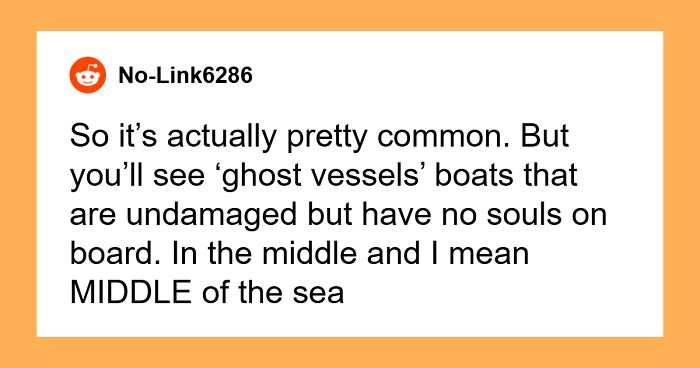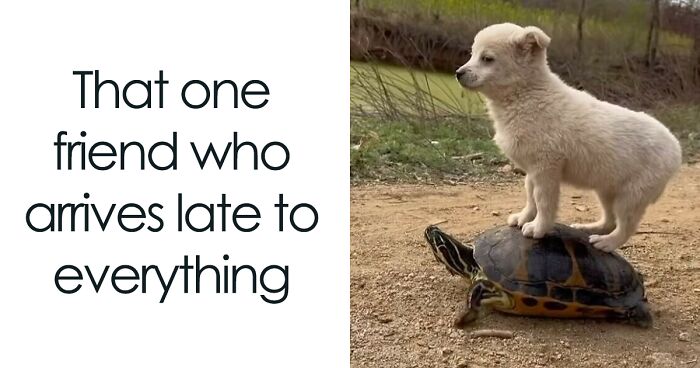As much as we’d probably like to think we’re really different from humans of the past, a simple glance at the art people have produced hundreds of years ago would suggest that some problems are just universal. Where our forbearers used paint and canvas, the modern human uses meme templates, but many of the ideas remain.
The “Classical Cringe” Instagram page is dedicated to hilarious and relatable memes using classical art. So get comfortable as you scroll through, upvote your favorites and be sure to share your thoughts in the comments section below.
More info: Instagram
This post may include affiliate links.
I’m pretty sure that some words in the Bible are colored red so that conservatives know to ignore them.
"But you look so pretty when you smile! Such a delicate little flower, an example of femininity and beauty! And any smile towards me means I can violently flirt with you and call you horrible names when you reject my sexual advances! "
There's something of dizzy delight to scrolling down your feed and landing on a Renaissance painting with a funny caption that perfectly captures precisely the way you felt when your Wi-Fi went out. Those moments when people get universal feeling or laughably modern moments buried deep in centuries-old paintings, catching a knowing smile from a Baroque nobleman or an amazed gasp from a Medieval saint, feel like discovering a secret handshake across the ages.
It’s as if the painter centuries ago knew exactly what we’d be thinking during a terrible 8-AM Zoom meeting. Part of the magic is recognizing that the human experience hasn’t really changed much. A detail that amused viewers in 1500, someone rolling their eyes at court gossip, can remind us of our own exasperation when somebody forwards us an endless chain email.
You had some of Elon’s cake so you’re probably tripping, but yeah that’s Mark
When a Dutch Golden Age toddler pulls on an adult's sleeve, we see our own kids' constant asking for snacks and TV time. Pairing those instances with a contemporary idiom like "When your roommate eats the last slice of pizza" compresses 500 years of shared aggravation into one glance.
It's especially satisfying when we get a genuine emotional nuance: a raised, contemptuous eyebrow that says nothing at all, an open-eyed, unadorned look of pure fear before battle, or that slouching give-up look that screams "I give up." Works by artists like Caravaggio or Goya are full of raw emotion. When one posts Goya's "The Third of May 1808" with a caption of "That feeling when you know it's Monday tomorrow," it works because the painting so perfectly captures fear and inevitability. History is no longer dusty, it's laughably relatable.
Indeed, the process sometimes involves a bit of cheeky editing, cropping a small group of figures from a huge fresco or zooming in on the goofy grin of a jester. A single face pulled from an elaborate scene can become an instant meme template. Take a man in a 17th-century feast who looks halfway intrigued and halfway horrified: edit in the caption “When you’re eating chips and your friend opens up about their existential crisis,” and watch the likes pile up.
We’re not just laughing at the art; we’re laughing at ourselves, our awkwardness, and the absurdity of daily life. This trend also creates unexpected moments of art history appreciation. Someone might tweet a cropped detail of Botticelli’s “Birth of Venus” with a caption about “checking your reflection before a video call,” and suddenly thousands of people ask, “What’s that painting from?"
Next thing you know, individuals are bookmarking Wikipedia articles, learning the deeper symbolism of the artist, and figuring out that paintings from the 1400s continue to resonate with them. A dash of humor can lead one to actual curiosity. Ultimately, uncovering these "memeable" moments in old art reminds one that no one owns the market on awkwardness, fear, or scandal." The same wide-eyed awe or wearied resignation painted in oil and tempera resonates in our emoji-marked, trending-hashtag world.
By rendering a scandalized look on a Baroque princess as "me when my boss books a 7 AM meeting," we pay homage to the agelessness of human feeling, even if we're here to mock our caffeine droughts. So the next time you look at a Victorian portrait overlaid with "When someone asks if you've tried turning it off and on again," take a moment to realize that you're involved in a centuries-old conversation.
People dressed in fancy robes and fancy wigs might not have had smartphones, but they knew precisely how it felt to have to suffer through disappointment, judgment, and that waking-up-early-on-Monday horror. In those split seconds of recognition, you’re not just amused, you’re connected to a shared human tapestry that stretches back through every brushstroke, centuries before the first meme ever went viral.
On the right "I have a pain in my neck" the left character "Do you want this flump I am holding?"
What's the difference between hungry and h***y? Where you put the cucumber.
so the third lady clearly was salty since she got more sleep than them.
I love these! This is the stuff we want BP! Please stop the "celebrity" c**p please
I love these! This is the stuff we want BP! Please stop the "celebrity" c**p please

 Dark Mode
Dark Mode 

 No fees, cancel anytime
No fees, cancel anytime 








